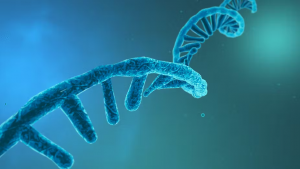The discovery and production of antibiotics transformed medicine forever and have saved millions of lives worldwide. However, many new strains of antibiotic-resistant bacteria are rapidly emerging that are incredibly difficult to treat due to their resistance to conventional treatments. This “antibiotic resistance crisis” has been attributed to the misuse and overuse of antibiotics along with the lack of new drug development. Antibiotic-resistant infections pose a real and serious threat to people and healthcare systems around the world.
For instance, in 1928, Sir Alexander Fleming discovered penicillin, and in doing so saved millions of lives and transformed modern medicine forever. Drug companies began to mass produce penicillin for commercial purposes, and it was used during World War II to control bacterial infections in soldiers. However, penicillin resistance had already begun to spread by 1942, when four Staphylococcus aureus strains were found to be resistant to penicillin treatment. Over the next few years, this penicillin-resistant strain of S. aureus spread from hospitals to communities and by the late 1960s, over 80% of both community and hospital acquired strains of S. aureus were penicillin resistant (Ventola, 2015). In response to this newfound problem, semisynthetic methicillin was introduced as a new antibiotic in the 1960s. However, cases of methicillin-resistant Staphylococcus aureus (MRSA) bacteria were identified within the same decade.
Unfortunately, as the pharmaceutical industry introduced new antibiotics such as gentamicin and vancomycin in the late 1960s through the early 1980s, resistance was eventually seen to nearly all of these drugs. Fewer new antibiotics were produced and today, decades after antibiotics were first introduced as a “miracle treatment,” bacterial infections have again become a serious threat.
Antibiotic resistance has several identifiable causes, some of which are overuse, misuse, and lack of development of new drugs. In terms of overuse, epidemiological studies have shown the direct relationship between antibiotic use and the emergence and spread of resistant bacteria strains. Resistance can occur through spontaneous mutations which are then passed down to offspring or transferred to other bacteria through plasmids. Antibiotics then drive natural selection by killing bacteria that are susceptible to drug treatments, leaving behind resistant bacteria to reproduce. Despite warnings of the dangers of overusing antibiotics, they continue to be overprescribed worldwide.
For example, in some areas of the United States, the number of prescribed courses of treatment with antibiotics per year exceeded the population. In many other countries, antibiotics are available to be purchased over the counter without a prescription. This lack of regulation of the dissemination of antibiotics along with their being easily accessible and cheap also promotes overuse. Unfortunately, antibiotics are also often inappropriately prescribed; for example, studies have shown that antibiotic treatment courses are incorrect in 30-50% of cases (Ventola 2015). This inappropriate and unnecessary exposure to antibiotics exposes patients to potential complications of antibiotics and also contributes to the emergence of antibiotic-resistant strains of bacteria.
Besides overuse and misuse of prescribed antibiotics, antibiotics are widely used as supplements in livestock to promote overall growth and prevent infection, thus producing larger yields of higher-quality produce. However, the antibiotics fed to livestock are also ingested by humans when they eat the food, adding to the antibiotic resistance crisis.
Another contributing factor to the antibiotic resistance crisis is the declining availability of new antibiotics. In the past, the pharmaceutical industry has effectively combated resistant bacteria by simply developing and introducing new antibiotics. However, this strategy has stalled due in part to economic obstacles. Antibiotic development has been shown to be an economically unwise investment due to the fact that they are used for relatively short periods compared to drugs that are used to treat chronic conditions. For example, the Office of Health Economics in London performed a cost-benefit analysis that calculated the net present value of a new antibiotic is only about $50 million compared to $1 billion for a drug that would treat a chronic neuromuscular disease. Because of this, many pharmaceutical companies choose not to invest in antibiotic development as they fear a lack of return on the millions of dollars that would be required to develop a new drug.
Antibiotic-resistant bacteria pose a large threat to public health. For example, MRSA kills more Americans every year than HIV/AIDS, Parkinson’s disease, emphysema, and homicide combined. Pathogens such as vancomycin-resistant enterococci (VRE), streptococcus pneumoniae, mycobacterium tuberculosis, and several multidrug-resistant (MDR) pathogens are also dangerous due to their resistance to common antibiotics. In 2014, the World Health Organization (WHO) warned that the antibiotic resistance crisis is becoming dire, and the Infectious Diseases Society of America (IDSA) and federal Interagency Task Force on Antimicrobial Resistance have declared MDR bacteria to be a substantial threat to U.S. public health and national security.
The rapid emergence of antibiotic-resistant bacteria threatens the extraordinary health benefits of antibiotics. The overuse and misuse of these drugs along with the lack of development of new antibiotic treatments by the pharmaceutical industry have returned the world to a time where bacterial infections are a serious threat to public health. Coordinated efforts must be taken to renew research efforts and pursue steps to manage this crisis.





